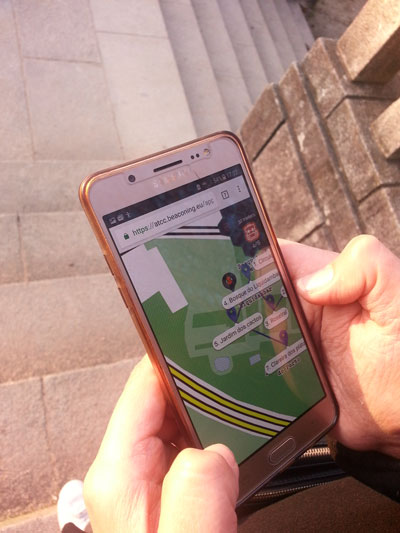by Pedro Cardoso (FEUP/ FBAUP and INESC TEC), Leonel Morgado (Universidade Aberta and INESC TEC), and António Coelho (FEUP and INESC TEC)
The great ambition of using games as the cornerstone of education is hindered by its associated teaching workload. The BEACONING project developed a framework based on an authoring tool for gamified lesson paths, which has been rolled-out in large scale across Europe. It includes stages for planning game-based educational activities, plus their deployment, monitoring, and assessment.
Games are great tools for learning and as such many teachers wish to employ them in their teaching practices. Notwithstanding, using games in education is hard. It is hard to plan the time and the teachers’ tasks; the students’ activities; to keep track of what each student is doing; to assess and provide feedback, and so on – and all these obstacles encumber and limit educational adoption of games [1]. The BEACONING project [L1] acknowledges this and created the concept of a gamified lesson path [2], by linking game plots (the narrative and level design) provided by game development companies with educational activities within a triadic assessment model [3]. Using an authoring tool developed at INESC TEC (Figure 1), a learning designer creates a gamified lesson path by selecting a game plot, linking learning activities structured as missions and quests into it, and finally by associating those activities with specific learning goals and challenges (mini-games). Learning designers are either experts at creating educational content, within companies and organisations, or teachers with training in this area. By selecting a gamified lesson path, teachers can automatically deploy games to their students, adapting them to specific individual requirements.
![Figure 1: Gamified Lesson Plan with branching activities, viewed in the authoring tool [L2].](/images/stories/EN120/cardoso1.png)
Figure 1: Gamified Lesson Plan with branching activities, viewed in the authoring tool [L2].
Not only students receive the games as part of educational activities from their teachers, but this deployment is also linked to the learning management platforms: teachers can track which students have not yet started learning within a gamified lesson plan, which ones are currently amidst it and where, and which students have finished it and how. Students can also track which teachers and courses have assigned them gamified lesson plans, and how they are progressing in each.
All of this linking is done via anonymization, using the BEACONING platform as middleware, so that gaming companies can deploy games to individual students over the Web without actually knowing who each student is: individual details are kept within the learning management system and retrieved directly by the game on students’ smartphones, without being sent to the companies or even to the middleware. BEACONING provides each student’s game with information on the actual web call to retrieve information such as player names, but this transit of information occurs solely between the student’s smartphone and the school’s learning management system.
By using BEACONING to track students’ progress, teachers can better manage their time and effort allocation when employing videogames in school, thus reducing their workload and empowering them to use these as a reliable and regular pedagogic approach “anytime and anywhere”. This authoring and deployment pipeline have now been successfully rolled out in large-scale testing across Europe (Figure 2) [L2].

Figure 2: Interface of a location-based activity used in pilot testing of the BEACONING platform.
BEACONING’s prototype and authoring pipeline approach holds the potential for application in many other non-traditional learning activities. Beyond gaming, we are exploring and expanding this approach to enable widespread deployment of active learning, location-based learning, immersive environments, outdoor activities, and more.
Links:
[L1] https://www.beaconing.eu/
[L2] https://beaconing.eu/wp-content/uploads/deliverables/D6.3.pdf
References:
[1] B. B. Marklund, A. S. A. Taylor: “Educational Games in Practice: The Challenges Involved in Conducting a Game-Based Curriculum”, Electronic Journal of e-Learning, 14(2), 122-135, 2016
[2] A. Bourazeri, et al.: « Taxonomy of a Gamified Lesson Path for STEM Education: The Beaconing Approach”, in European Conf. on Games Based Learning (pp. 29-37). Academic Conferences International Ltd, 2017.
[3] R. Baptista, A. Coelho, C. V. de Carvalho: “Relation Between Game Genres and Competences for In-Game Certification”, in Int. Conf. on Serious Games, Interaction, and Simulation (pp. 28-35). Springer, 2015.
Please contact:
António Coelho
FEUP & INESC TEC, Portugal
Leonel Morgado
Universidade Aberta & INESC TEC, Portugal











